
Find Help
More Items From Ergsy search
-

Does Paracetamol reduce inflammation?
Relevance: 100%
-

Is Paracetamol the same as Aspirin?
Relevance: 63%
-

What is Paracetamol?
Relevance: 62%
-
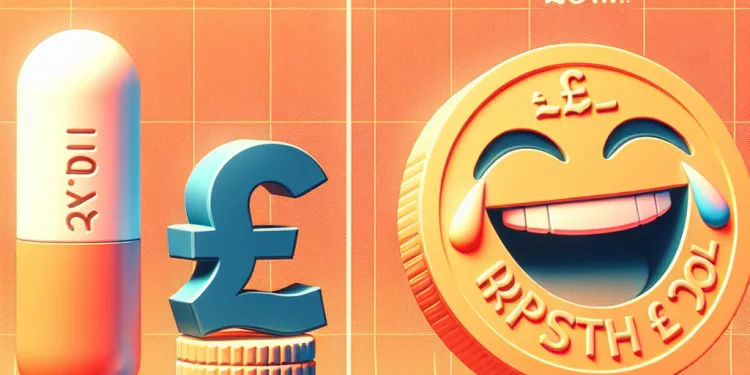
Which one is better for toothache: Ibuprofen or Paracetamol?
Relevance: 60%
-

What is Paracetamol?
Relevance: 60%
-

What is the difference between Aspirin, Paracetamol, and Ibuprofen?
Relevance: 58%
-

Which one is better for headaches: Aspirin or Paracetamol?
Relevance: 53%
-

Is it safe to take Paracetamol with Ibuprofen?
Relevance: 53%
-
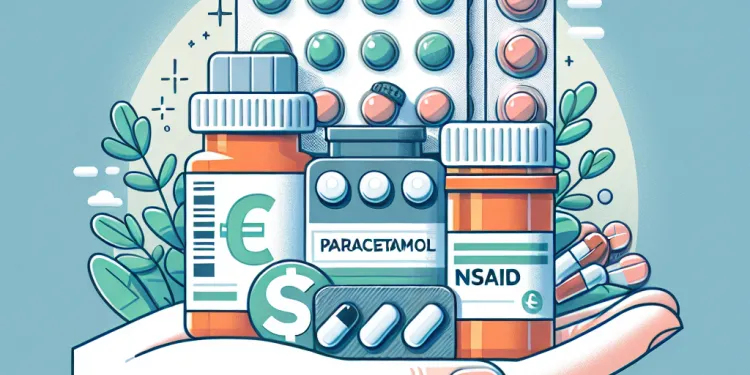
Why might someone choose Paracetamol over NSAIDs?
Relevance: 52%
-

What is a common use of paracetamol?
Relevance: 51%
-

Can Ibuprofen be used to reduce inflammation?
Relevance: 51%
-

Is paracetamol linked to autism?
Relevance: 49%
-
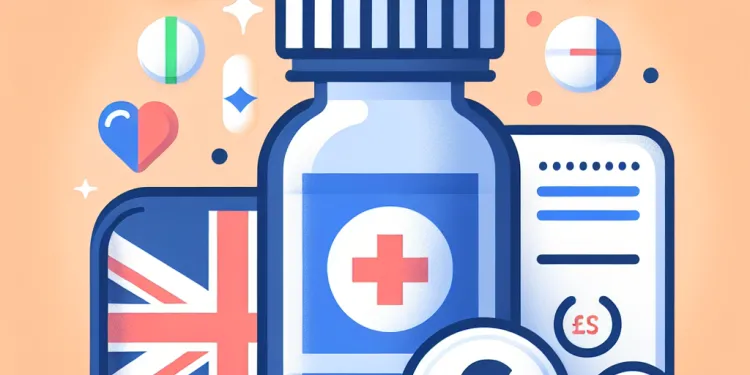
What are the side effects of Paracetamol?
Relevance: 48%
-

Can I take ibuprofen and paracetamol together? - Common Health Questions | NHS
Relevance: 47%
-

Can Paracetamol be used in pregnant women?
Relevance: 46%
-
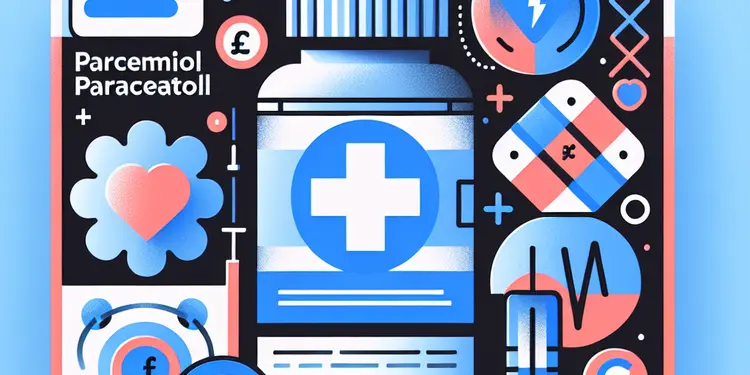
Why is there concern about paracetamol and autism?
Relevance: 46%
-

Is there any scientific evidence that links paracetamol use to autism?
Relevance: 43%
-

Is there any risk of using paracetamol outside of pregnancy with regard to autism?
Relevance: 42%
-

What should pregnant individuals consider when taking paracetamol?
Relevance: 42%
-

What can cause autism, if not paracetamol?
Relevance: 31%
-

How prevalent is the use of paracetamol during pregnancy?
Relevance: 31%
-

What are the limitations of studies examining paracetamol use and autism?
Relevance: 29%
-

Has paracetamol been linked to other developmental issues besides autism?
Relevance: 27%
-

Have there been any recent changes in guidelines regarding paracetamol use and pregnancy?
Relevance: 26%
-

Are Tylenol and Paracetamol the same?
Relevance: 25%
-

Have any major health organizations advised against using paracetamol during pregnancy due to autism concerns?
Relevance: 23%
-

What do researchers say about the link between paracetamol and autism?
Relevance: 17%
-

Are there safer alternatives to paracetamol for pregnant individuals experiencing pain or fever?
Relevance: 17%
-

How to treat sinusitis | NHS
Relevance: 17%
-

How to treat earache | NHS
Relevance: 16%
-

How to treat a sprained ankle
Relevance: 16%
-

How to deal with period pain | NHS
Relevance: 16%
-

Shoulder pain | NHS
Relevance: 16%
-

Advice if your child has... A High temperature
Relevance: 15%
-

How to treat an insect bite or sting | NHS
Relevance: 15%
-

Shoulder pain | NHS
Relevance: 15%
-

How to treat glandular fever | NHS
Relevance: 15%
-
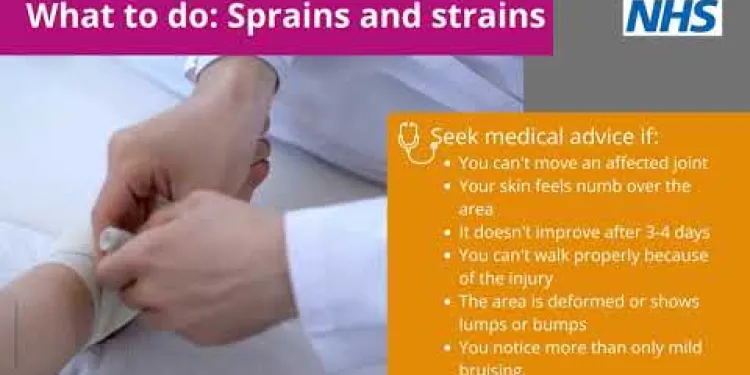
Self-care for sprains and strains
Relevance: 15%
-

How to treat a scald burn
Relevance: 15%
-

How to deal with period pain | NHS
Relevance: 14%
Introduction to Paracetamol
Paracetamol, known as acetaminophen in some countries, is a commonly used over-the-counter medication in the UK. It is widely utilized for its analgesic (pain-relieving) and antipyretic (fever-reducing) properties. Available in various forms such as tablets, capsules, and syrup, paracetamol is often chosen for its efficacy and low risk of side effects when used correctly. Despite its widespread use, the question remains: does paracetamol reduce inflammation?
Mechanism of Action
Paracetamol's primary action is believed to occur in the central nervous system, where it inhibits the production of prostaglandins, which are chemicals that promote inflammation, pain, and fever. However, unlike non-steroidal anti-inflammatory drugs (NSAIDs) such as ibuprofen and aspirin, paracetamol does not significantly affect the peripheral prostaglandins and thereby has a much weaker anti-inflammatory effect.
Paracetamol and Inflammation
Inflammation is the body's natural response to injury or infection, characterized by redness, heat, swelling, and pain. NSAIDs are commonly used to treat inflammation because they effectively inhibit the enzymes involved in the inflammatory process. Paracetamol, however, lacks strong anti-inflammatory properties. Studies have shown that while it is effective at reducing pain and fever, its impact on inflammation is minimal compared to NSAIDs. This is due to its limited peripheral action, meaning it does not significantly influence the inflammatory processes occurring at the site of injury or infection.
Clinical Uses of Paracetamol
In the UK, paracetamol is predominantly used for the treatment of mild to moderate pain and to reduce fever. It is commonly recommended for headaches, toothaches, muscle aches, and cold and flu symptoms. While it can be used in conjunction with other medications for more complicated pain management, it is important to be aware that paracetamol is not the drug of choice for conditions where inflammation is a major concern, such as arthritis or sports injuries. For such conditions, NSAIDs may be more appropriate due to their superior anti-inflammatory effects.
Considerations and Conclusion
It's important to consider the intended use of paracetamol when determining its suitability for an individual. For those seeking relief from pain and fever without a significant need for anti-inflammatory action, paracetamol is an effective option. However, if reducing inflammation is a primary goal, a different class of medication may be more appropriate. Always consult with a healthcare professional to ensure appropriate medication usage. In summary, while paracetamol is highly effective for pain and fever, its role in reducing inflammation is limited, making it less suitable for conditions where inflammation reduction is crucial.
Introduction to Paracetamol
Paracetamol is a medicine many people use for pain and fever. In some countries, it's called acetaminophen. You can buy it without a prescription in the UK. It comes as tablets, capsules, or syrup. Paracetamol works well for easing pain and lowering fever, and it usually does not cause many side effects if used correctly. But some people ask, "Does paracetamol help with swelling?"
How Paracetamol Works
Paracetamol mainly works in the brain. It stops chemicals called prostaglandins that cause pain, fever, and swelling. Unlike other medicines like ibuprofen and aspirin, which help reduce swelling, paracetamol does not work well on swelling in other parts of the body.
Paracetamol and Swelling
Swelling happens when the body is hurt or fighting germs. It can cause redness, heat, swelling, and pain. Medicines like ibuprofen help because they stop the body from making swelling chemicals. Paracetamol does not have strong effects on swelling. It helps with pain and fever but not as much with swelling.
When to Use Paracetamol
In the UK, people use paracetamol for small pains and fever. It helps with headaches, toothaches, sore muscles, and colds. It can be used with other medicines for more pain, but it is not the best for swelling problems like arthritis or sports injuries. For swelling, doctors might suggest medicines like ibuprofen instead.
Things to Think About
Think about why you need medicine before choosing paracetamol. If you need help with pain and fever but not swelling, paracetamol is a good choice. But if swelling is a big problem, a different medicine might work better. Always talk to a doctor to make sure you use the right medicine. To sum up, paracetamol is good for pain and fever, but not the best for swelling.
Frequently Asked Questions
Does paracetamol reduce inflammation?
Paracetamol is not classified as an anti-inflammatory drug. It is mainly used to relieve pain and reduce fever.
Is paracetamol an anti-inflammatory medication?
No, paracetamol is not considered an anti-inflammatory medication. It primarily acts as an analgesic and antipyretic.
Can paracetamol help with swelling?
Paracetamol is not effective in reducing swelling or inflammation. It's better for pain relief and fever reduction.
Why doesn't paracetamol reduce inflammation?
Paracetamol works differently from non-steroidal anti-inflammatory drugs (NSAIDs) and does not inhibit the enzymes that cause inflammation.
What is paracetamol used for?
Paracetamol is used to relieve mild to moderate pain and reduce fever. It is not used to treat inflammation.
What alternatives to paracetamol reduce inflammation?
NSAIDs like ibuprofen and aspirin can help reduce inflammation in addition to relieving pain.
When should I use paracetamol?
Use paracetamol for treating mild to moderate pain such as headaches or fevers, not for inflammation.
How does paracetamol work in the body?
Paracetamol works by inhibiting the production of prostaglandins in the brain, which helps relieve pain and reduce fever.
Is paracetamol effective for arthritis?
Paracetamol can relieve pain associated with arthritis but does not address the inflammation often present with this condition.
Does paracetamol have any anti-inflammatory properties at all?
Paracetamol may have minimal anti-inflammatory properties, but it is not considered sufficient compared to NSAIDs.
What types of pain is paracetamol best for?
Paracetamol is best for mild to moderate pain such as headaches, toothaches, muscle aches, and reducing fever.
Can children take paracetamol?
Yes, paracetamol is safe for children when used in the correct dosage specific to their age and weight.
Is it safe to take paracetamol with ibuprofen?
Yes, paracetamol and ibuprofen can be taken together or alternated to relieve pain when needed. Follow medical advice for the correct dosage.
Can paracetamol be used for long-term pain management?
Paracetamol can be used for long-term pain management, but it is crucial to follow dosing recommendations to prevent liver damage.
What are common side effects of paracetamol?
Paracetamol is generally safe, but side effects can include allergic reactions, rash, or increased liver enzymes if overdosed.
Is paracetamol liver-friendly?
Paracetamol is generally safe for the liver when taken as directed, but overdose can lead to serious liver damage.
What should I do if I overdose on paracetamol?
Seek immediate medical attention if you suspect a paracetamol overdose, as it can lead to severe liver damage.
How long does it take for paracetamol to work?
Paracetamol typically starts to relieve pain and reduce fever within 30 minutes to an hour after ingestion.
Can paracetamol cause addiction or dependency?
Paracetamol does not cause addiction or dependency. It is non-opioid and considered safe for regular use within prescribed limits.
Can I use paracetamol for menstrual cramps?
Yes, paracetamol can be effective for relieving menstrual cramps, though NSAIDs may provide more benefit by reducing inflammation.
Can paracetamol help with swelling?
Paracetamol is a medicine. It helps if you have pain or a fever.
If your body is sore and swollen, paracetamol may not help much. Paracetamol is not the best for swelling.
For swelling, ask a grown-up or a doctor about using other medicines. Medicines like ibuprofen can help with swelling.
Always follow instructions from doctors or trusted adults when taking medicine.
Paracetamol is a medicine. It is not used to help with swelling. People take it to stop pain and bring down a high temperature when they feel sick.
Does paracetamol help with swelling?
Paracetamol is a medicine. It stops pain and helps fevers. It is not for swelling or redness.
For swelling, you can try other medicines like ibuprofen. Always ask a grown-up or doctor before taking medicine.
No, paracetamol is not a medicine that helps with swelling. It mainly helps to stop pain and bring down a fever.
Does paracetamol help with swelling?
Paracetamol is a medicine that helps when you have pain or a fever. But, it is not very good for swelling.
If you have swelling, you can try using an ice pack. This can help make the swelling go down.
Always talk to a doctor or a trusted adult before taking medicine.
Paracetamol does not help with swelling or inflammation. It is good for stopping pain and lowering a fever.
Why doesn't paracetamol help with swelling?
Paracetamol can make pain and fever better, but it does not help with swelling.
Swelling happens when the body fights an infection or gets hurt. Some medicines, like ibuprofen, help with swelling.
To help understand better, you can:
- Use pictures or diagrams.
- Listen to audio explanations.
- Use simple words to explain tough ideas.
Paracetamol works in a different way than some other medicines called NSAIDs. It does not stop the enzymes that make inflammation happen.
What is paracetamol used for?
Paracetamol is a medicine.
It helps when you have a headache.
It can make pain go away.
It also helps if you have a fever.
If you are not sure, ask a doctor or pharmacist.
You can use tools like a picture or watch a video to learn more.
Paracetamol helps to make pain less and bring down a fever. It doesn’t help with swelling.
What other medicines can help with swelling instead of paracetamol?
Pain medicines like ibuprofen and aspirin can help if you have swelling or if you hurt.
When to use paracetamol?
Paracetamol is medicine for pain. It can help if you have a headache or fever.
You should use it when you feel pain or your temperature is high.
Always follow the instructions on the box. If you are not sure, ask a grown-up or the doctor.
You can take paracetamol when you have a headache or a fever. It helps with small to medium pain. It does not help with swelling.
How does paracetamol work in the body?
Paracetamol is a type of medicine.
It helps if you have a headache or a fever.
It works inside your body to make you feel better.
Paracetamol helps stop the pain signals from going to your brain so you don't feel the pain as much.
It can also help to bring down a high temperature.
If you find reading hard, you can ask for help from someone you trust. They can read with you. You can also listen to an audiobook.
Paracetamol helps when you are in pain or have a fever. It stops the body from making things called prostaglandins in your brain. These make you feel pain and get a fever.
Does paracetamol help with arthritis pain?
Paracetamol is a medicine people use for pain. It can help with headaches and fevers.
It might help a little with the pain from arthritis. Arthritis makes your joints hurt and swell.
If your arthritis hurts a lot, ask a doctor. They can tell you the best ways to feel better.
Sometimes other medicines work better for arthritis pain. Always check with the doctor.
You can use reminders or ask someone to help you remember when to take your medicine. You can also write it down.
Paracetamol can help with pain from arthritis, but it does not help with swelling that can come with it.
Can paracetamol help with swelling?
Paracetamol can help with pain, but it does not reduce swelling much. Medicines called NSAIDs are better for swelling.
What kind of pain does paracetamol help with?
Paracetamol is good for:
- Headaches
- Toothaches
- Colds
- Sore muscles
Tips:
- Ask a grown-up if you are unsure.
- Use a pictogram to understand when to take paracetamol.
Paracetamol is good for small to medium pain. You can use it for things like headaches, toothaches, and sore muscles. It also helps to bring down a fever.
Is it safe for children to have paracetamol?
Yes, paracetamol is safe for children if you give them the right amount for their age and weight.
Is it OK to take paracetamol and ibuprofen together?
Paracetamol and ibuprofen are medicines to help when you feel pain or have a fever. But, it's important to know if you can take both together safely.
Here are some easy steps to find out:
- Ask a grown-up, like a parent or caregiver, what they think.
- Talk to a doctor or a pharmacist. They know lots about medicine and what's safe.
- Always read the label on the medicine bottle. It has important information.
If you're not sure, it's always best to ask someone who knows about medicines.
Yes, you can take paracetamol and ibuprofen at the same time to help with pain. You can also take them at different times. Make sure you follow the doctor's advice for how much to take.
Can you use paracetamol to help with pain for a long time?
You can take paracetamol to help with pain for a long time. But it's very important to take the right amount so you don't hurt your liver.
What happens to your body when you take paracetamol?
When you take paracetamol, sometimes your body might react in certain ways. These reactions are called side effects.
Here are some things that might happen:
- You might feel sick in your tummy.
- Your skin might get a rash.
- You might feel dizzy or sleepy.
If you feel any of these things, it's important to tell an adult or a doctor.
To better understand, you can ask someone to explain these side effects or use a picture guide. This can help make the information clearer.
Paracetamol is usually safe to take. But sometimes, it can cause problems. These problems include allergies, a skin rash, or hurting your liver if you take too much.
If you find it hard to read or understand, try asking someone to read it with you. You can also use apps that read text out loud or look for videos about paracetamol for more help.
Is paracetamol safe for your liver?
Paracetamol is a medicine that is safe for your liver if you take it the right way. But if you take too much, it can hurt your liver a lot.
What should I do if I take too much paracetamol?
If you take too many paracetamol pills:
- Tell an adult right away.
- Call a doctor or nurse as soon as you can.
- Go to the hospital if you feel very sick.
You can use tools like:
- A phone to call for help.
- A trusted adult to stay with you.
Remember, it is important to act fast if you take too much paracetamol.
Go to the doctor right away if you think someone has taken too much paracetamol. Taking too much can hurt your liver a lot.
How long does it take for paracetamol to start working?
Paracetamol usually starts to help with pain after about 30 minutes. It helps most people feel better in 1 hour.
If you are hurt or feel sick, ask someone you trust for help. Talking to a doctor or nurse can also be good.
You can use a timer or a clock to check the time. It helps to know when you took the medicine and when it should start working.
Reading with a friend or using tools like audiobooks can make it easier to understand.
When you take paracetamol, it helps with pain and fever. It usually works in 30 minutes to 1 hour.
Can taking paracetamol make me want to keep taking it?
Paracetamol is a medicine. It does not make you want to take more and more. You will not get hooked on it. It is not like strong drugs. It is safe if you take the right amount.
Can I take paracetamol for period pain?
Yes, taking paracetamol can help with period pain. But, medicines called NSAIDs might work better because they also help with swelling.
Useful Links
- Ergsy carfully checks the information in the videos we provide here.
- Videos shown by Youtube after a video has completed, have NOT been reviewed by ERGSY.
- To view, click the arrow in centre of video.
- Most of the videos you find here will have subtitles and/or closed captions available.
- You may need to turn these on, and choose your preferred language.
- Go to the video you'd like to watch.
- If closed captions (CC) are available, settings will be visible on the bottom right of the video player.
- To turn on Captions, click settings .
- To turn off Captions, click settings again.
More Items From Ergsy search
-

Does Paracetamol reduce inflammation?
Relevance: 100%
-

Is Paracetamol the same as Aspirin?
Relevance: 63%
-

What is Paracetamol?
Relevance: 62%
-

Which one is better for toothache: Ibuprofen or Paracetamol?
Relevance: 60%
-

What is Paracetamol?
Relevance: 60%
-

What is the difference between Aspirin, Paracetamol, and Ibuprofen?
Relevance: 58%
-

Which one is better for headaches: Aspirin or Paracetamol?
Relevance: 53%
-

Is it safe to take Paracetamol with Ibuprofen?
Relevance: 53%
-

Why might someone choose Paracetamol over NSAIDs?
Relevance: 52%
-

What is a common use of paracetamol?
Relevance: 51%
-

Can Ibuprofen be used to reduce inflammation?
Relevance: 51%
-

Is paracetamol linked to autism?
Relevance: 49%
-

What are the side effects of Paracetamol?
Relevance: 48%
-

Can I take ibuprofen and paracetamol together? - Common Health Questions | NHS
Relevance: 47%
-

Can Paracetamol be used in pregnant women?
Relevance: 46%
-

Why is there concern about paracetamol and autism?
Relevance: 46%
-

Is there any scientific evidence that links paracetamol use to autism?
Relevance: 43%
-

Is there any risk of using paracetamol outside of pregnancy with regard to autism?
Relevance: 42%
-

What should pregnant individuals consider when taking paracetamol?
Relevance: 42%
-

What can cause autism, if not paracetamol?
Relevance: 31%
-

How prevalent is the use of paracetamol during pregnancy?
Relevance: 31%
-

What are the limitations of studies examining paracetamol use and autism?
Relevance: 29%
-

Has paracetamol been linked to other developmental issues besides autism?
Relevance: 27%
-

Have there been any recent changes in guidelines regarding paracetamol use and pregnancy?
Relevance: 26%
-

Are Tylenol and Paracetamol the same?
Relevance: 25%
-

Have any major health organizations advised against using paracetamol during pregnancy due to autism concerns?
Relevance: 23%
-

What do researchers say about the link between paracetamol and autism?
Relevance: 17%
-

Are there safer alternatives to paracetamol for pregnant individuals experiencing pain or fever?
Relevance: 17%
-

How to treat sinusitis | NHS
Relevance: 17%
-

How to treat earache | NHS
Relevance: 16%
-

How to treat a sprained ankle
Relevance: 16%
-

How to deal with period pain | NHS
Relevance: 16%
-

Shoulder pain | NHS
Relevance: 16%
-

Advice if your child has... A High temperature
Relevance: 15%
-

How to treat an insect bite or sting | NHS
Relevance: 15%
-

Shoulder pain | NHS
Relevance: 15%
-

How to treat glandular fever | NHS
Relevance: 15%
-

Self-care for sprains and strains
Relevance: 15%
-

How to treat a scald burn
Relevance: 15%
-

How to deal with period pain | NHS
Relevance: 14%


